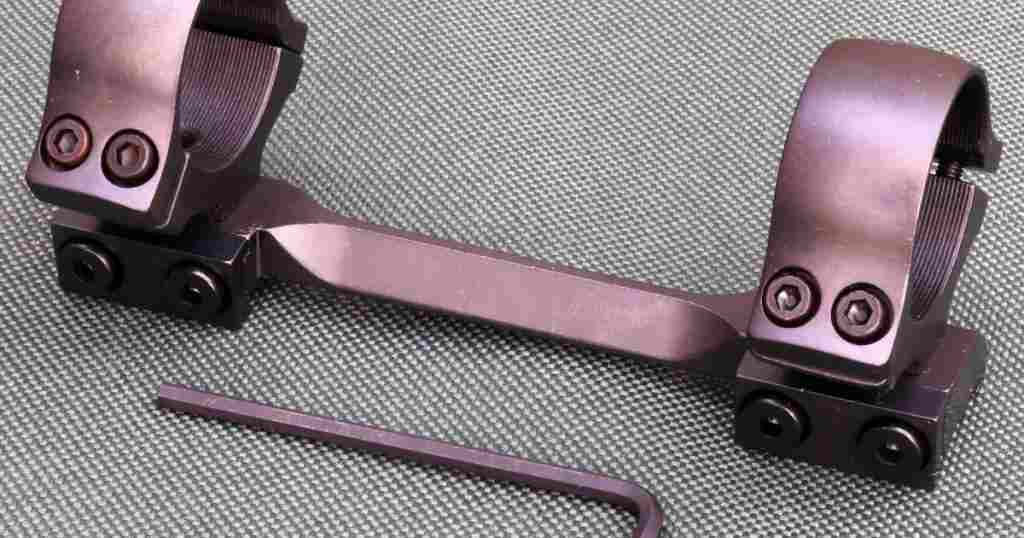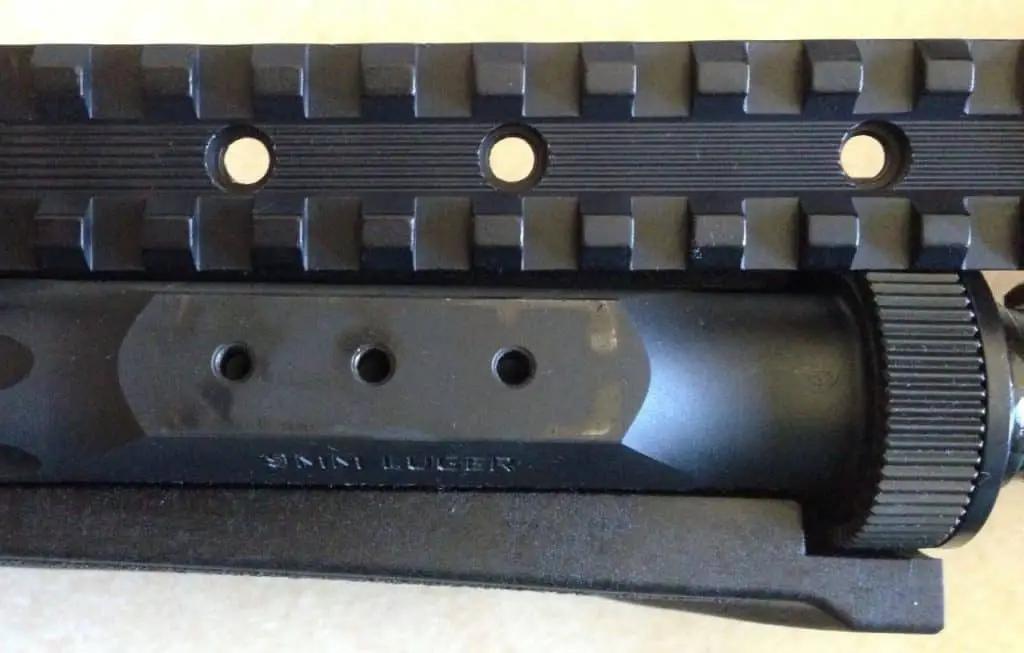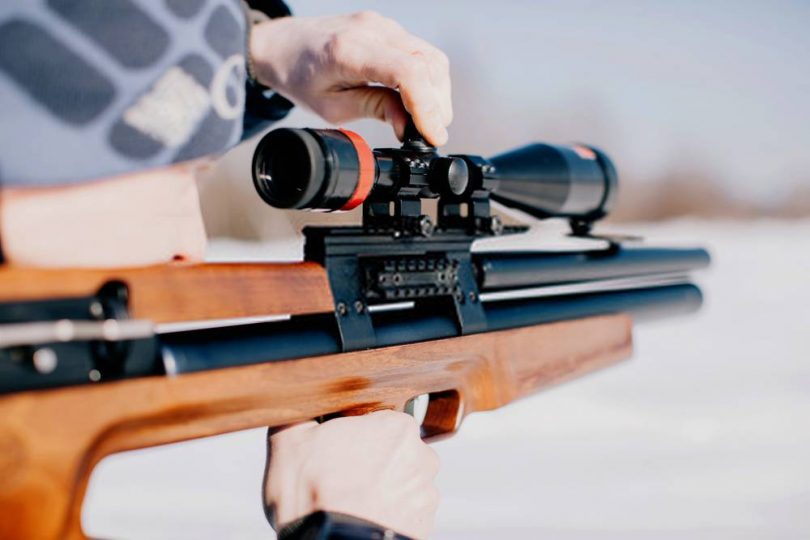The body of a rifle is made up of three main parts: barrel, stock, and action. Most hunters focus their attention on these essential parts every time they repair their rifles.
However, they also tend to ignore a smaller but equally important part.
We’re talking about the rifle scope. Do you know how to repair a rifle scope? If not, you’re in the right place.
Scopes allow a clear view of your targets located at high distances.
Without scopes, it would be really difficult to shoot small and distant targets like wild ducks in the middle of the sky.
Certainly, an experienced hunter can improve the accuracy of every shot with the help of a well-calibrated scope.
If your rifle scope has stopped working properly and urgently demands to be repaired, don’t worry.
Today we’ll teach you everything you need to know about rifle scope repairing.
How to Repair a Rifle Scope: In-depth Guide

Why do you need to fix your rifle scope?
There are cheap as well as expensive rife scopes out there. If your damaged scope costs several hundred dollars, it would be a shame to throw it away to buy a new one.
If you learn how to repair it, you can save that money and invest it in other important things.
The first thing you need to do before getting down to work is to know well the different parts of a scope and their functions.
By doing this, you’ll be able to identify the damage and the elements that need to be replaced.
Going hunting with a defective rifle scope is the worst thing you can do. You’ll end up losing your ammunition and your prey will escape after each failed shot.
On the other hand, a functional and well-calibrated rifle scope can greatly improve your accuracy and performance as a hunter.
Anatomy of a scope

-
Objective lens
It’s the external lens of the scope that directly faces the target and receives light from the outside environment. The bigger the objective lens, the higher the light gaining.
However, the increase in size also implies a considerable increase in weight.
-
Elevation turret
The elevation turret is a millimeter wheel located on the top of the rifle scope that allows you to adjust the vertical position of the reticle.
-
Windage turret
It’s a millimeter wheel located on the right side of the rifle scope that allows adjusting the horizontal position of the reticle.
-
Scope tube
It’s the solid metal tube that contains all the lenses and moving parts of the scope.
The scope tube is fixed to the rifle through a couple of rings located at each extreme. Lapping these scope rings are also easy.
-
Power ring
The power ring allows you to control the magnification of the image.
Usually, a higher magnification implies a higher detail but also a considerable loss of the field of view.
-
Eyepiece
It’s the rigid metal cylinder that holds the ocular lens. On some scopes, the eyepiece can be adjusted to improve reticle focus.
-
Ocular lens
It’s the lens that directly faces the eye of the shooter.
Usually, different coatings are applied over the ocular lens to improve light transmission and repel water.
How to Repair a Rifle Scope: Easy Tips and Tricks
Fixing a misalignment
If you can’t get a clear image from your scope, it probably isn’t properly aligned.
To check the alignment, place the rifle over your shoulder and keep an eye open in front of the eyepiece lens.
Then point a target and verify that the barrel of the rifle also points in the same direction. You can also use a quality bore sight to adjust your scope.
Common causes of misalignments
- Rings

As said before, the scope is fixed to the rifle body through a pair of rings.
These rings should be strong and fit perfectly to the silhouette of the scope to prevent adjustment problems.
Inappropriate rings don’t guarantee the stability of the scope.

Sometimes, rifles may come with mounting holes misaligned from the factory. When this happens, the rings can’t be properly aligned.
In these cases, it’s better to take your rifle to a professional to correct the problem.
On the other hand, if all the holes are perfectly aligned and the problem persists, maybe there’s an internal misalignment in the scope.
- Ammunition

Always use the ammunition type recommended by the manufacturer.
Usually, using a heavier kind of ammunition will affect the sighting.
- Scope size

Rifles with thin barrels don’t work very well with big and heavy scopes. If that’s your case, perhaps that’s the main cause of your misalignment problem.
In that case, it’s better to replace the scope with a smaller model.
Rifle Scope Repair: PRO Maintenance Tips
-
Injecting nitrogen into the scope
Most modern scopes are filled with nitrogen. This gas blocks the passage of moist air into the scope tube, preventing cloudy lenses.
In case the nitrogen escapes from the tube, it’s convenient to return the product to the manufacturer to get a refill.
-
Don’t use oil
Never apply oil inside the scope if the metal surface is rusting. This is a clear sign that the scope has lost its nitrogen seal.
In this case, it’s better to return the product to the manufacturer to solve the problem.
If the oil enters inside the tube and touches the lenses, your scope will end up being completely useless.
-
How to clean the lenses?
Dirt particles tend to accumulate on the surface of the lenses. These abrasive particles tend to scratch the lenses over time so you need to clean them up.
To prevent this, it’s advisable to rub the surface with a cotton ball soaked with alcohol.
-
Replace your scope if necessary
When regular maintenance isn’t enough to make your scope work properly, it should be replaced.
Check if the warranty of your current scope is still valid so you can replace it at no extra cost.
Conclusion
The best way to guarantee the best operation of your thermal or long-range or rimfire rifle scope is to keep a regular maintenance routine.
Most of the problems associated with these devices are linked to misalignment problems.
For that reason, it’s a good idea to regularly check the stability and position of your rifle scope to avoid problems.
Now that you know all the secrets about scope repair, you won’t need to contact a professional every time your scope gives you trouble.
Just follow these valuable tips and everything will be fine.









Leave a Comment